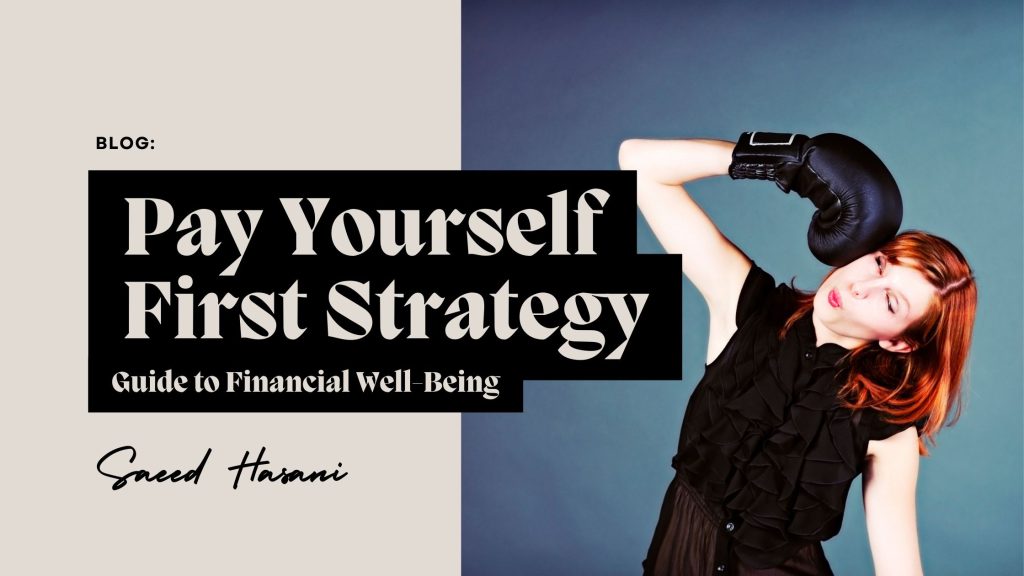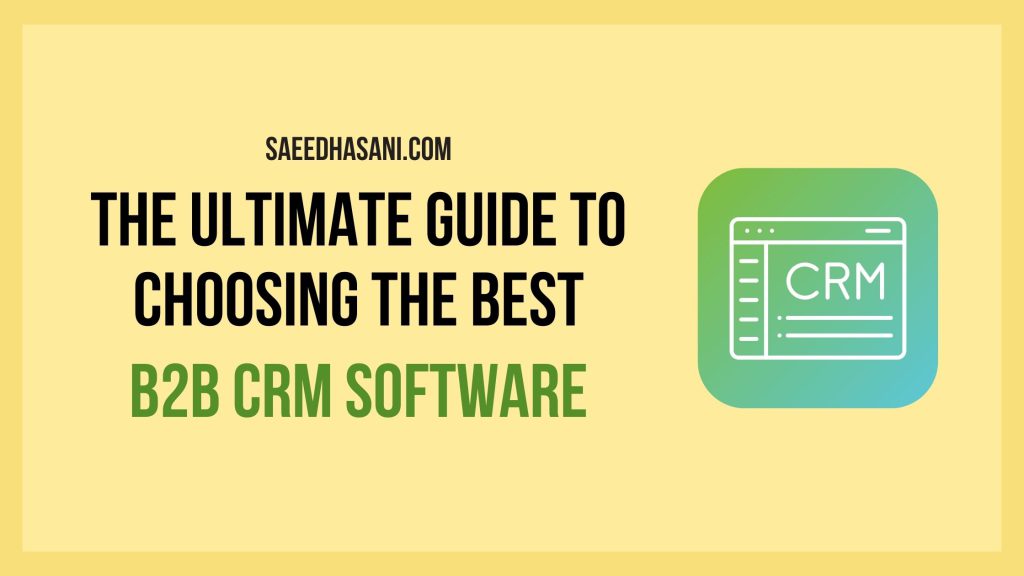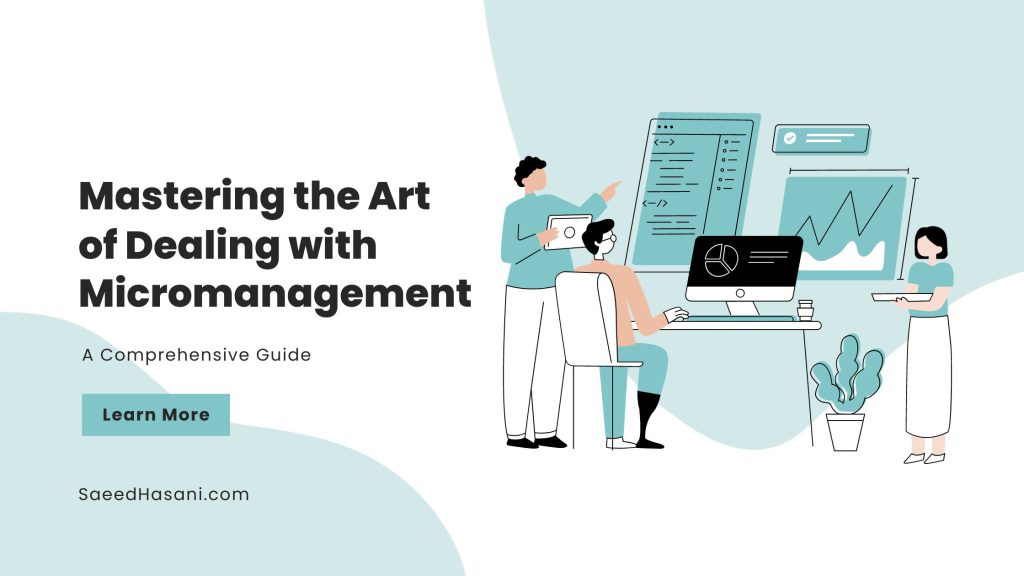The Pay Yourself First Strategy: A Comprehensive Guide to Financial Well-Being

Picture this: a life where financial worries take a backseat, where your money is working for you, and where dreams become achievable goals. It’s not a fantasy; it’s the power of financial security, and at the heart of it lies the Pay Yourself First strategy.
Today, we’re diving deep into the world of “Pay Yourself First” – a game-changing concept that can redefine the way you handle your money. In a nutshell, it’s all about prioritizing savings or investments by allocating a portion of your income before you pay your bills or go shopping.
Why should you care about this strategy and its components? Because it’s not just about wealth accumulation; it’s about peace of mind, debt reduction, and long-term financial freedom. Join us as we explore the ins and outs of Pay Yourself First, uncover the magic it holds, and pave the way for a brighter financial future.
What Does “Pay Yourself First” Mean?
Ah, “Pay Yourself First” – it’s a phrase that’s thrown around a lot in the world of personal finance, but what exactly does it mean? Let’s break it down in an understandable way.
Defining Pay Yourself First
“Pay Yourself First” is a simple financial strategy that basically says, that before you do anything else with your money, you should set aside a portion for your own savings or investments. In essence, you’re treating your savings as a non-negotiable expense that needs to be paid, just like your rent or bills.
Imagine your paycheck is like a delicious pizza. When you follow the “Pay Yourself First” principle, the first slice you take isn’t for rent, groceries, or that shiny new gadget you’ve been eyeing. Nope, that first slice is for your savings, and it goes into a separate savings account or investment fund. Only after you’ve taken that slice can you divvy up the rest for your other financial obligations and spending desires.
The Historical Context of the Concept
“Pay Yourself First” isn’t a newfangled idea; it’s been around for quite a while. The concept is often attributed to George S. Clason’s book, “The Richest Man in Babylon,” which was published in 1926. In the book, the character Arkad, who’s considered the richest man in Babylon, imparts financial wisdom, and one of his key pieces of advice is to save a portion of your income before spending on anything else.
It’s kind of amazing that this idea has stood the test of time, isn’t it? In essence, it’s a reminder that good money habits have always been a timeless recipe for financial success.
The Core Principle: Saving Before Spending
So, what’s the big deal about “Pay Yourself First”? Why is it such a beloved concept in personal finance? The core principle behind it is simple but incredibly powerful: you prioritize your future financial well-being by saving money before you have a chance to spend it all.
Here’s why it’s smart: When you pay yourself first, you’re ensuring that you’re saving consistently. It’s a way to build an emergency fund, save for retirement, invest in opportunities, or achieve your financial goals. It’s not about being stingy; it’s about making sure you secure your financial future.
You see if you wait to see what’s left at the end of the month and then try to save, chances are there won’t be much left. The “Pay Yourself First” approach flips that script. It sets the savings aside at the beginning, and then you figure out how to live within your means based on what’s left. It’s a subtle but profound shift in mindset.
In a world full of temptations and seemingly endless opportunities to spend, “Pay Yourself First” reminds us to prioritize our financial well-being. So, whether you’re saving for that dream vacation, a down payment on a house, or your golden years in retirement, paying yourself first is a savvy way to make your financial goals a reality. Plus, it’s a great way to ensure that you get a slice of that pizza, even if you end up sharing the rest with bills and expenses.
How to Pay Yourself First?
Alright, we’ve got the scoop on what “Pay Yourself First” means, but how do you actually put this awesome financial strategy into action? Let’s break it down, step by step, in an easy-to-understand way.
Practical Steps to Implement the Strategy
- Determine a Percentage: Start by deciding how much of your income you want to pay yourself first. A common recommendation is around 20% of your earnings, but you can adjust this based on your goals and current financial situation.
- Open a Separate Account: To make sure you don’t accidentally spend your “Pay Yourself First” money, open a separate savings or investment account. It’s like putting your savings in a lockbox – you can’t just dip into it whenever you want.
- Set Up an Automatic Transfer: Most banks offer the option to automatically transfer money from your main account to your savings or investment account. Set this up so that as soon as your paycheck lands in your main account, a portion is whisked away to your “Pay Yourself First” account.
- Revisit and Adjust: As your financial situation changes or your goals evolve, be sure to revisit the percentage you’re paying yourself first. You can increase it when you get a raise or decrease it if you have unexpected expenses.
Setting Financial Goals and Priorities
Before you can effectively pay yourself first, you need to know what you’re saving for. Are you building an emergency fund? Saving for a vacation? Investing for retirement? Setting clear financial goals is like putting destinations on your financial map. It helps you determine how much to save and what your priorities are.
Creating a Pay Yourself First Budget
This is where the rubber meets the road. To make “Pay Yourself First” work, you’ll want to create a budget that reflects your commitment to saving. Here’s a simplified example:
- Income: List your monthly income, like your salary, side gig money, or any other cash flow.
- Expenses: Then, list your fixed expenses, like rent or mortgage, utilities, groceries, and transportation. These are the essentials.
- Pay Yourself First: Deduct the amount you’ve decided to pay yourself first. This comes right off the top, even before you account for discretionary spending.
- Discretionary Spending: What’s left is your spending money for entertainment, dining out, and other non-essential stuff.
Remember, the key here is to make paying yourself a top priority, even if it means adjusting other areas of your budget. It might require some trade-offs, like dining in instead of dining out, but that’s the beauty of this approach – it helps you see where your money really goes and make conscious choices.
Automating Savings
Automation is your best friend when it comes to paying yourself first. Set up those automatic transfers so you don’t have to think about it. The money will move on its own, like a little financial ninja, ensuring you’re saving consistently without the temptation to skip a month.
In a nutshell, “Pay Yourself First” is like treating your savings as the VIP in your financial life. It gets the front-row seat, and the rest of your money finds its place in the audience. It’s a simple yet super effective way to build financial security and work towards your goals, one automatic transfer at a time. So, go ahead, give it a try, and watch your financial future get brighter.
Determining How Much to Pay Yourself
Alright, so we’ve covered the basics of “Pay Yourself First,” but how do you figure out the right amount to stash away before you start spending? Let’s dive into the nitty-gritty of this decision-making process.
Factors to Consider When Deciding on an Amount
- Your Financial Goals: What are you saving for? Your goals can play a big role in determining how much you should pay yourself. Saving for a down payment on a house might require a larger chunk of your income compared to saving for a weekend getaway.
- Your Income: Let’s be real; how much money you make is a significant factor. It’s easier to save a big slice of the pie if the pie is enormous. If your income is more of a cupcake than a pie, you’ll need to be a bit more strategic.
- Essential Expenses: You’ve got bills to pay, groceries to buy, and life to live. Make sure you’re not skimping on the essentials. You don’t want to pay yourself so much that you can’t cover your basic needs.
- Debt Obligations: If you’re carrying high-interest debt, like credit card debt, it often makes sense to prioritize paying that down before saving a ton. Those interest rates can eat up your money faster than you can say “interest rates.”
- Emergency Fund: Building an emergency fund should be a priority. Having at least three to six months’ worth of living expenses saved is a good rule of thumb.
- Retirement Savings: Don’t forget about your golden years! Putting money into retirement accounts is like planting a money tree that’ll bloom later in life. If your employer matches contributions, take full advantage of that free money.
How Self-Employed Individuals Should Decide Their Payments
If you’re self-employed, determining how much to pay yourself can be a tad trickier. You might not have a regular paycheck, and your income can fluctuate like a rollercoaster. Here’s how to tackle it:
- Set Up a Business Account: Keep your business and personal finances separate. Pay yourself from your business account based on a consistent salary, even if it means leaving some profits in the business for reinvestment.
- Consider Taxes: Self-employed individuals have to deal with taxes a bit differently. Set aside money for taxes separately. The remaining amount can be your “pay yourself first” salary.
- Review Regularly: Since self-employed income can be unpredictable, make it a habit to review and adjust your “pay yourself first” amount periodically. When business is good, you can increase your salary, and during lean times, you might need to tighten the belt.
Remember, it’s not about the exact amount you pay yourself but the habit of prioritizing your savings. Life is all about balance, so find the sweet spot that lets you enjoy today while securing tomorrow. So, whether you’re rocking a traditional job or navigating the self-employed hustle, “Pay Yourself First” is your financial superpower.
The Benefits of Paying Yourself First
Alright, so you’ve embraced the “Pay Yourself First” mindset, but why bother? What are the sweet rewards waiting for you at the end of this financial journey? Well, here’s the lowdown on the benefits:
Financial Security and Peace of Mind
Picture this: You’ve paid yourself first, and your savings are steadily growing like a well-watered plant. Financial surprises, like a busted car transmission or an unexpected medical bill, don’t make you break into a cold sweat anymore. You’ve got an emergency fund to handle them. That’s financial security, baby!
When you prioritize saving, you create a safety net for yourself. It’s like having a superhero cape in your closet for those rainy days. The peace of mind that comes with knowing you can handle life’s curveballs is priceless. It’s like a stress-reduction spa for your mind.
Debt Reduction and Wealth Accumulation
Now, let’s talk about the magic of “Pay Yourself First” in the land of debt and wealth. Here’s the deal:
- Debt Reduction: By paying yourself first, you’re not just putting money in your savings account; you’re also chipping away at those pesky debts. When you’ve got some cash tucked away for emergencies, you’re less likely to rely on credit cards for unexpected expenses. Over time, this can significantly reduce your debt, especially high-interest debt, which means you’re paying less to the debt overlords.
- Wealth Accumulation: Remember that separate savings or investment account we talked about? As you consistently fund it through “Pay Yourself First,” that money starts working for you. It’s like hiring a little money helper to go out and earn more money for you. Over time, this can turn into substantial wealth, whether it’s for retirement, a dream home, or a once-in-a-lifetime trip around the world.
In a nutshell, “Pay Yourself First” helps you escape the clutches of debt and pave the way for building wealth. It’s like a financial two-for-one deal.
Real-Life Examples
Sometimes, the best way to understand a concept is by looking at real-life examples. So, let’s dive into some stories of people who’ve made “Pay Yourself First” work for them.
Case Studies Showcasing Successful Pay Yourself First Implementations
1: The Early Saver
Meet Sarah, a recent college graduate who started her first job. She decided to implement the “Pay Yourself First” strategy right from the get-go. She automated 20% of her monthly income to go into a savings account. Over the years, she increased her contributions as her income grew. Fast forward a decade, and Sarah has a robust emergency fund, a thriving investment portfolio, and a down payment for her dream house. The secret to her success? Consistency and the power of time.
2: The Debt Demolisher
John was swimming in credit card debt, and it was taking a toll on his peace of mind. He decided to use the “Pay Yourself First” method not just for saving but also for debt reduction. He allocated a portion of his income to pay off his credit card balances. He continued this disciplined approach, and in a few years, he became debt-free. With the money he saved on interest, he started investing and building his wealth. “Pay Yourself First” didn’t just change his finances; it changed his life.
Inspiring Stories of Individuals Who Improved Their Financial Lives
The Penny-Pincher Turned Investor
Karen was a self-proclaimed penny-pincher who’d always been afraid of spending money. However, she realized that being overly frugal wasn’t helping her achieve her financial goals. She decided to implement “Pay Yourself First” by setting aside a percentage of her income for savings and investing. It was a game-changer. She learned to balance her spending desires with saving for her future. Today, she’s not just saving; she’s investing in stocks and real estate, building her wealth while still enjoying life.
The Late Starter
Tom wasn’t the most financially savvy guy in his younger years. He started “Pay Yourself First” in his late 40s, realizing he needed to catch up for retirement. He automated a significant portion of his income for savings and diligently contributed to his retirement accounts. While he didn’t have decades of compounding on his side, he made the most of the time he had left. By the time he retired at 65, he had a comfortable nest egg to enjoy his golden years. Tom’s story is proof that it’s never too late to start.
The Impact of the Strategy on Different Financial Situations
The “Pay Yourself First” strategy is versatile. It doesn’t discriminate based on your financial situation.
- For those living paycheck to paycheck, it can be the ticket to breaking the cycle and building an emergency fund.
- If you’re carrying student loans or credit card debt, “Pay Yourself First” can help you dig out of that financial hole faster.
- High earners can use the strategy to turbocharge their wealth-building, automating significant savings for early retirement or other financial goals.
- Self-employed individuals can create consistency in their income by setting a regular paycheck through the strategy, making it easier to manage their finances.
The beauty of “Pay Yourself First” is that it can adapt to different financial situations. It’s like a financial chameleon, changing its colors to fit your needs. Whether you’re looking for financial security, freedom from debt, or long-term wealth, this strategy has the potential to make a significant impact on your life. So, why not give it a shot?
Pay Yourself First vs. Traditional Budgeting
Alright, let’s put “Pay Yourself First” and traditional budgeting in the ring for a friendly financial face-off. Which approach is the champ? Well, let’s break it down, round by round, in an easy-to-understand way.
A Comparative Analysis of the Two Approaches
Round 1: The Approach
Traditional Budgeting: In the blue corner, we’ve got traditional budgeting. It’s like having a referee in your finances. You decide how much to spend in each category, like groceries, rent, and entertainment. The money you have left after that is what you save.
Pay Yourself First: In the red corner, we’ve got “Pay Yourself First.” It’s more like a financial coach who says, “Savings, you’re up first!” You set aside a portion of your income for savings or investing before you even think about your expenses.
Round 2: Priority
Traditional Budgeting: Your savings might come last on the list. If there’s not much left after your expenses, you could be skimping on savings.
Pay Yourself First: Savings is the headliner of the show. It’s the first thing you deal with when you get your paycheck, making it a top priority.
Advantages and Disadvantages of Each Method
Traditional Budgeting Advantages:
- Control: You have detailed control over where your money goes, making it easier to spot and cut unnecessary expenses.
- Flexibility: It’s great for those who need to scrutinize every dollar and adjust their spending frequently.
Traditional Budgeting Disadvantages:
- Complexity: Creating and sticking to a budget can be time-consuming and mentally taxing.
- Savings as an Afterthought: It can sometimes result in minimal or no savings if you’re not disciplined.
Pay Yourself First Advantages:
- Automated Savings: It simplifies the savings process by automating it, making it effortless and consistent.
- Psychological Impact: It’s a mindset shift; you treat savings as a non-negotiable expense, which often leads to better financial habits.
Pay Yourself First Disadvantages:
- Potential Overspending: If you’re not careful with your spending after paying yourself first, you might find yourself short on essential expenses.
- Less Control: It’s not as detailed as traditional budgeting, so you may not be as aware of where every dollar goes.
Why Pay Yourself First Often Leads to Better Financial Outcomes
Here’s where “Pay Yourself First” throws a knockout punch:
- Consistency: It promotes regular savings. You’re not waiting to see if you have anything left at the end of the month; you’re putting your money to work immediately.
- Forces Savings: With traditional budgeting, saving is often what’s left after spending. “Pay Yourself First” ensures you save before spending.
- Psychological Boost: It changes your relationship with money. You become a saver, not just a spender. This shift in mindset often leads to better financial decisions.
- Emergency Fund: It makes building an emergency fund a priority, which is crucial for financial security.
The winner depends on your financial personality and goals. Some folks prefer the meticulous control of traditional budgeting, while others thrive with the simplicity and automation of “Pay Yourself First.” The bottom line? Both approaches can lead to financial success, but “Pay Yourself First” often comes out on top for its ease, consistency, and psychological benefits. It’s like the financial equivalent of a one-punch knockout – simple, effective, and empowering.
One Way to Pay Yourself First: Investment Strategies
Alright, let’s dive into the exciting world of investing and how it can be your trusty sidekick in your “Pay Yourself First” journey.
Exploring Investment Options
Investing is like planting seeds that can grow into a money tree over time. But where can you plant those seeds? Here are some common investment options to consider:
- Stocks: When you buy stocks, you’re essentially buying a piece of a company. As the company grows, the value of your stocks can increase. It’s like owning a slice of that pizza that’s getting bigger.
- Bonds: Bonds are like loans you give to companies or governments. In return, they pay you interest. It’s a bit like being the bank and collecting interest payments.
- Real Estate: You can invest in real estate by buying property or investing in real estate investment trusts (REITs). Think of it as earning money from rental income or property appreciation.
- Mutual Funds: These are like baskets of different investments (stocks, bonds, etc.) bundled into one. It’s like ordering a variety pack of snacks.
- Exchange-Traded Funds (ETFs): ETFs are similar to mutual funds but are traded like stocks. They offer diversity and are often more cost-effective.
- Retirement Accounts: 401(k)s and IRAs are specifically designed for retirement savings, often offering tax advantages.
How Investing Aligns with the Pay Yourself First Strategy
When you pay yourself first, a chunk of your income is set aside for savings or investing before you start spending. Investing is a natural fit for this strategy because it helps your money grow over time, doing the heavy lifting for you.
Here’s the beauty of it: as you consistently invest a portion of your income, those investments can grow and generate returns. It’s like having a bunch of little workers who are out there making more money for you. Over time, your initial investment can turn into a substantial sum. Plus, you’re essentially paying yourself twice – first by saving, and second by enjoying the returns on your investments.
Risk Management in Investment
Now, let’s talk about the big ‘R’ word – risk. Every investment comes with some level of risk. It’s like a rollercoaster; there are ups and downs. But don’t let that scare you away. Risk can be managed:
- Diversification: Think of it as not putting all your eggs in one basket. By spreading your investments across different assets (stocks, bonds, real estate), you reduce the risk of a single investment tanking your entire savings.
- Time Horizon: Consider how long you plan to invest. If you’re saving for retirement in 30 years, you have a longer time horizon and can ride out market fluctuations. But if you need the money in a year for a down payment on a house, you might want to be more conservative.
- Risk Tolerance: This is your comfort level with risk. Some people are fine with the rollercoaster ride, while others prefer the kiddie swings. Assess your own risk tolerance and choose investments that match it.
In the world of “Pay Yourself First,” investing can be a powerful tool. It aligns with the strategy’s core principle of prioritizing savings. With a bit of understanding and smart risk management, you can grow your financial future while paying yourself first.
Automating Pay Yourself First
Alright, it’s time to talk about one of the coolest aspects of “Pay Yourself First” – automation. It’s like having a trustworthy sidekick in your financial superhero journey. Let’s break it down!
The Role of Automation in Achieving Financial Goals
Imagine automation as your money’s personal assistant. It takes the job of saving money off your busy plate. The big deal here is consistency. You see, we humans can be forgetful, and easily swayed by shiny things or tempting sales.
Automation, on the other hand, is a steady, unyielding force. It ensures that a slice of your income goes straight to your savings or investment account before you even get a chance to think about it.
Automation is your secret weapon in achieving your financial goals. It takes willpower and second-guessing out of the equation. You don’t have to make the conscious choice to save every time you get paid; it’s just happening, like clockwork.
Tools and Apps for Automating Savings
There’s a whole arsenal of tools and apps designed to make automating your savings a breeze:
- Bank Features: Many banks offer automated transfers. You can set up recurring transfers from your checking to your savings or investment account. It’s usually as simple as a few clicks on your banking app or website.
- Robo-Advisors: If you’re into investing, robo-advisors like Wealthfront and Betterment can automate your investments. They use algorithms to manage your portfolio based on your financial goals and risk tolerance.
- Apps like Digit and Qapital: These apps are designed to help you save effortlessly. They analyze your spending patterns and transfer small amounts of money to your savings account. It’s like having a digital squirrel tuck away acorns for the winter.
- Employer Tools: If you have a workplace retirement account like a 401(k), you can set up automatic contributions. Plus, some employers even offer to match your contributions, which is like getting free money.
Best Practices for Consistent Savings
Now, let’s talk about a few best practices to ensure your automated savings are on point:
- Set It and Forget It: Once you’ve set up your automated transfers, try not to mess with them. Don’t be tempted to tinker with your savings when you see a flashy sale or an enticing deal. Trust the process.
- Review and Adjust: While it’s all about “set it and forget it,” don’t forget to review your automated savings periodically. Life changes, and so do your financial goals. You might want to increase your savings rate as your income grows or your goals expand.
- Emergency Fund First: Prioritize building an emergency fund with your automated savings. It’s your financial safety net, and it’s essential for peace of mind.
- Stay Aware: Even though automation does the heavy lifting, it’s good to remain aware of your financial situation. Periodically check your balances, review your financial goals, and make sure your automated savings align with your aspirations.
Automation is like the reliable buddy who’s got your back on this “Pay Yourself First” journey. It’s a powerful tool for consistent savings, and it can help you achieve your financial goals without breaking a sweat. So, set it up, and let it work its magic while you sit back and watch your financial future unfold.
The Psychological Aspect of Pay Yourself First
Money isn’t just about numbers and dollars; it’s also about the way our brains tick. So, let’s explore the psychology behind “Pay Yourself First” in a relaxed manner.
Behavioral Psychology and Personal Finance
Alright, first things first: behavioral psychology and personal finance are like peanut butter and jelly. They go hand in hand. Behavioral psychology is all about understanding how our brains work when it comes to making decisions, especially financial ones.
You see, our brains are wired to prefer immediate rewards over future ones. It’s why we might splurge on that fancy coffee today rather than saving for a vacation next year. Behavioral psychology helps us recognize these quirks in our thinking and, most importantly, figure out how to work with them, not against them.
Overcoming Mental Barriers to Saving
Now, let’s talk about those sneaky mental barriers that can sabotage our savings goals. They’re like little gremlins trying to steer you off course.
- Instant Gratification Gremlin: This little guy whispers, “Why save when you can spend now?” It’s all about that instant pleasure. To overcome it, try setting up automated savings, so you’re not tempted to spend the money sitting in your checking account.
- Procrastination Parrot: This feathered friend chirps, “I’ll start saving later.” Procrastination is a savings killer. To silence this parrot, break your goals into smaller, achievable steps. Start with something manageable and build from there.
- Fearful Fox: The fearful fox says, “What if I lose all my money?” Investing can be scary, but it’s essential for long-term growth. To calm the fox, educate yourself about investment options, diversify your portfolio, and consider talking to a financial advisor.
Developing a Healthy Money Mindset
Your money mindset is like the captain of your financial ship. To make “Pay Yourself First” work, you need a sturdy and positive mindset. Here’s how you can nurture it:
- Be Mindful: Start by being aware of your spending habits and how they align with your financial goals. Mindfulness is like a magnifying glass for your spending choices.
- Gratitude Attitude: Focus on what you have, not what you lack. Gratitude is a superpower; it can help you be content with what you have while still working towards your financial goals.
- Set Clear Goals: Knowing what you’re saving for and why can be a powerful motivator. It gives your money purpose and direction.
- Visualize Success: Imagine what achieving your financial goals will feel like. Visualization can be a potent tool in keeping you motivated.
So, when it comes to “Pay Yourself First,” it’s not just about the dollars and cents. It’s about understanding your own psychology, working with your quirks, and developing a money mindset that supports your financial goals. It’s a bit like mastering the art of balancing on a financial tightrope, and with the right mindset, you can stroll across it with ease.
Pro Tip: Investing or Saving? [As Pay Yourself First Strategy]
Alright, folks, it’s decision time: should you put your “Pay Yourself First” money into a savings account or dive into the world of investing?
Saving – The Steady Eddie
Saving is like the comfy old sweater of the financial world. It’s safe, reliable, and always there when you need it. Here’s why saving is a solid choice for your “Pay Yourself First” strategy:
- Liquidity: Savings are super liquid. That means your money is readily available for emergencies or unexpected expenses. It’s like having a financial first-aid kit.
- No Risk: You won’t lose your money. With savings accounts in banks, your cash is protected by insurance up to a certain limit. It’s like having a financial security blanket.
- Peace of Mind: Seeing your savings grow is like a warm hug. It gives you peace of mind knowing you have a cushion to fall back on.
Investing – The Thrill Seeker
Investing is like the adventurous cousin who’s always seeking the next thrill. It can be more exciting, but it comes with a few twists and turns. Here’s why investing can be a great choice:
- Higher Returns: Over the long haul, investing tends to generate higher returns compared to traditional savings accounts. It’s like planting seeds that grow into money trees.
- Inflation Fighter: Investing can help your money beat the eroding effects of inflation. Inflation is like the villain that makes your dollars worth less over time.
- Wealth Building: Investing can be a powerful tool for building wealth. If you have long-term financial goals, like retirement or buying a home, investing can help you get there faster.
The Happy Marriage – A Mix of Both
Here’s the pro tip: You don’t have to choose one or the other. You can have a bit of both in your “Pay Yourself First” strategy. Think of it like having a diversified financial portfolio:
- Keep some money in a savings account for your short-term goals and emergency fund. This is your financial safety net.
- Invest some of your “Pay Yourself First” money for your long-term goals. This is your financial growth engine.
By combining the two, you get the best of both worlds – security and growth. It’s like having the old sweater for comfort and the adventurous spirit for excitement.
So, there you have it, the pro tip for “Pay Yourself First.” Don’t lock yourself into a single choice. Blend the steady hand of saving with the growth potential of investing to create a balanced and effective financial strategy. It’s like having both chocolate and peanut butter in your financial sandwich – a perfect combination.
Conclusion
In conclusion, the “Pay Yourself First” strategy is your financial superpower, offering a simple yet effective approach to building financial security and achieving your goals.
By consistently saving or investing a portion of your income before spending, you’re creating a financial safety net and unlocking the potential for long-term wealth.
It’s time to take charge of your financial well-being; share your thoughts and experiences with “Pay Yourself First” in the comments below, and let’s keep the conversation going!







Responses